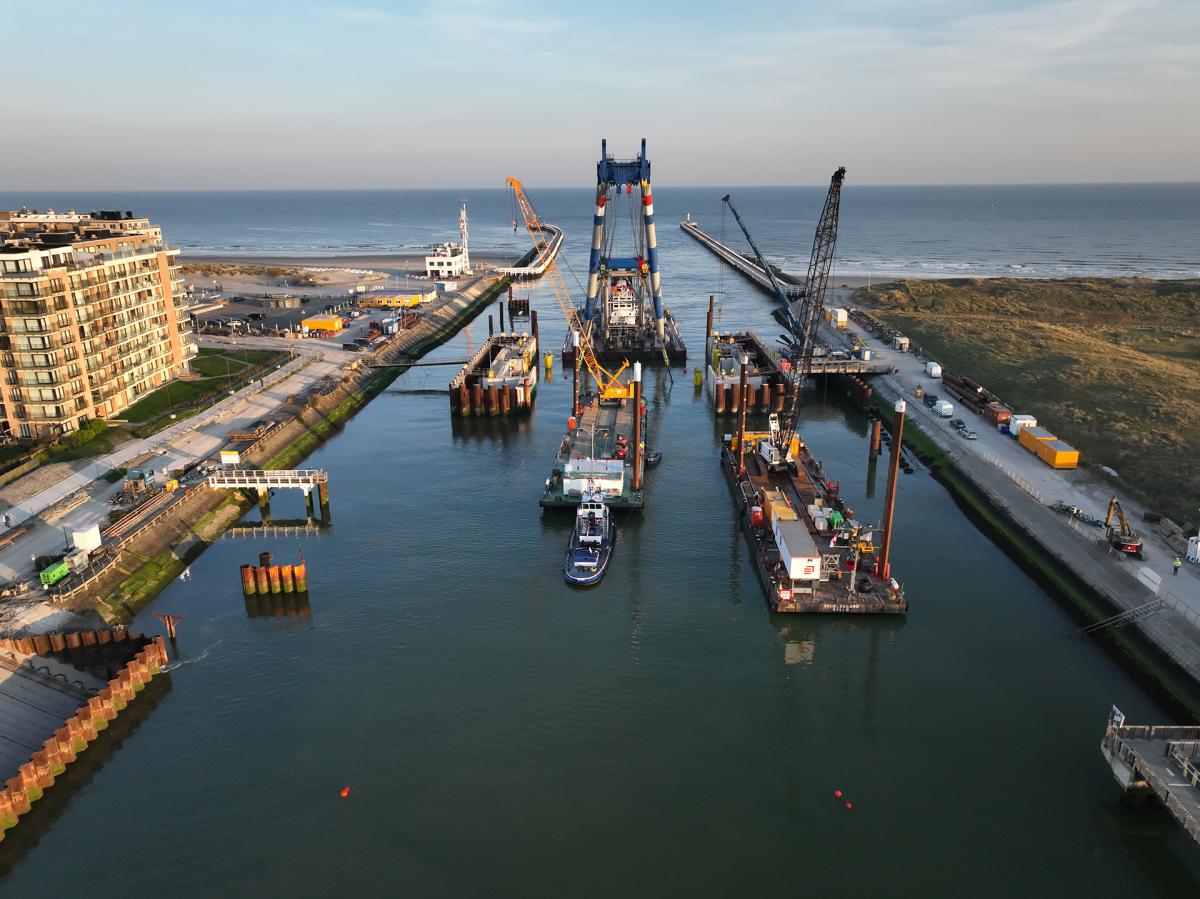Storm surge barrier protects Belgium from natural disasters

The storm surge barrier in Nieuwpoort protects Belgium's coastline from severe storms that occur every 10 years. More than that, it can withstand a 1000-year storm with waves of up to 8 metres high. This ingenious structure is located in the access channel to the Nieuwpoort marina. Two abutments on both banks are connected underwater by a concrete sill and retaining wall. In 2022, the concrete structure was already put in place.
100-year warranty
The concrete sill design is to remain on the seabed of the channel for at least 100 years. In 2024, our teams will install the 1,300-tonnes steel retaining wall. By 2025, the storm surge barrier will be ready to protect the coastline from the forces of nature.
IMPOSSIBLE...
To avoid disturbing shipping and port activities in Nieuwpoort, we built the sill in the port of Antwerp, 105 km away, together with our partner Herbosch-Kiere. This presented us with another major challenge: the heavy structure had to be brought to Nieuwpoort. No truck so big or crane so powerful to move this colossal structure.
MADE POSSIBLE
Our engineers worked out a solution to make the seemingly impossible possible. They proposed to build the sill on a floating pontoon that can be submerged for transport. Thanks to the benefit of water buoyancy, the sill weight is effectively reduced to 1,200 tonnes. Archimedes' law applied in practice.
A 42-hour journey
Port of Antwerp
In three months' time, we built the sill on a floating pontoon in the port of Antwerp. The result: a 4,500-tonnes structure made of reinforced concrete and stainless steel plates. In April 2022, we were able to cast off and depart for Nieuwpoort.
A 12-hour journey to
Two tugboats took care of this, with an initial stop in Ostend, where we submerged the pontoon and sill. By doing so, we were able to reduce the weight to 1,200 tonnes.
A 6-hour journey to Nieuwpoort
The lifting barge sailed with the immersed sill to Nieuwpoort. This journey was not without risks. Per tidal cycle, we had but a limited time to reach our final destination. Only between three hours before high tide and three hours after, the channel was deep enough to submerge the sill in the access channel. We also needed favourable weather conditions: no too strong winds, no too high waves. We prepared a detailed tide schedule for a safe and efficient trip.
